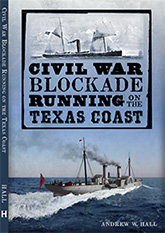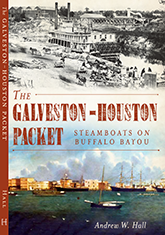How Crowded Was Monitor‘s Turret?
Very.
Samuel Dana Greene’s account of the action with C.S.S. Virginia gives the following description:
![]()
![]()
It’s not clear to me whether the two gun captains, Stocking and Loughran, were being counted by Greene as part of the eight men assigned to their respective guns, so the total number in the turret during the action was either nineteen or twenty-one. To get a visual sense of what that looked like, I dropped nineteen figures into a model of Monitor‘s turret. This is the result:
![]()
![[IMG]](https://i0.wp.com/farm9.staticflickr.com/8264/8612835528_d4dd68fb14_b.jpg)
![]()
![[IMG]](https://i0.wp.com/farm9.staticflickr.com/8544/8611730013_b6a0e89361_b.jpg)
![]()
![[IMG]](https://i0.wp.com/farm9.staticflickr.com/8397/8611730149_e7229435a7_b.jpg)
![]()
This model doesn’t include any of the other necessary gear that would have been inside the turret, and there was additional plating on the interior surface of the turret (over the joints in the primary plating) that’s not reflected in the model. (Haven’t got to it yet.) So in reality, it was likely more cramped than shown in the model. I haven’t made any particular attempt to put crewmen in exact gun drill positions, either. Also note that the heavy, iron pendula that closed the gunports could not be opened simultaneously — there was too little space between the ports for both to swing clear toward the centerline at the same time. In practice, you would not see both guns run out at the same time.
Nonetheless, a very crowded and chaotic place.
Previous, incomplete renders of this structure are on Flickr, although those show the two hatches on the top of the turret incorrectly — the slid backwards, not inboard as specified on Eriocsson’s original plan.
________






To further add to the crowding and confusion, I’m guessing the space directly behind the guns was not available – lest the recoil result in serious injuries. Seems they would have needed a choreographer in there as well.
Drill, drill, and drill some more.
I’m biting my tongue to avoid quoting Palin, dude!
One wonders just how hot and smokey it got inside the turret during an action. Rather uncomfortably so, I would imagine. And I can’t imagine visibility was all that good.
Another supurb modelling job! Thanks for sharing this. Those guns would have to retract all the way to the far side of the turret, or you wouldn’t be able to get a ramrod in the barrel.
Also, do you know, sir, if the turret was powered by the ship’s engine or if it has hand cranked?
Thanks. It was powered by steam, with its own engine. It was not, like later turrets, mounted on rollers, and was actually raised very slightly, rotated into place, and lowered again. It was not designed for firing “on the fly,” although I know some monitors during the war did adopt that practice.
Note the heavy diagonal bracing from the center shaft of the turret to the bottom edge of the armor — this was to take the weight of the armor plate while the turret was raised, when the weight of the entire thing was on that one, central shaft.
Let make sure I understand you—the turret would be pushed up (all bazillion tons of it), then rotated, then set back down? That seems an awkward design to me.
That’s as I understand it, although the distance is very small, just enough to relieve the weight on the base ring. An inch maybe, but enough to distort the turret without lots of bracing.
Wonderful model! The one question that has always come to me is; how did they load those guns? Even when they are out of battery, there doesn’t seem to be enough room for the length of the ramrod and sponge and since the gun-port was closed, the implements could not have been extended through the port.
That’s a great question. I think it’s likely they used a rope rammer/sponge like the one below:
Could be…. however I find it hard to believe that they could push an 11 in. shot that weighs in at 165 lbs with a rope rammer. I have never seen one or the drawings for one, but I suspect perhaps they may have used an implement made in sections that could be assembled as the round was loaded. I have never seen the loading procedures described in any ordnance manual. It’s all food for thought, perhaps someone out there has the answer. Thanks for your time Andy!
I thought about an articulated rammer, too, but I don’t think it’s practical. A screw-together mechanism obviously wouldn’t work.Besides, these guys were in a big, BIG hurry to load and fire. My guess is that they had shortened rammers and a guy with long arms shoved and rotated it down the barrel. Maybe Andy needs to add a couple inches to one of the crewmen!!
It didn’t have to screw together, socket and pin or a hinge would do it. I can’t see a crewman reaching inside a hot bore or, can I imagine trying to find one stupid enough to place himself in front of a loaded 11 inch…
It would have been nice if someone who was there would have described the procedure.
I’m sure there is a description, if not for U.S.S. Monitor, then for another of the same type. I just need to go digging for it.
A leather sleeve would prevent burns to the rammer crewman. it’s probably a little naive to think that the rammer was somehow in a more precarious position than the others. All 19 crewmen faced extinction every time they loaded that heavy gun with the pendula closed. Proximity to the muzzle wouldn’t make any difference.
Maybe the rammer crewman got paid an extra nickel a month to make damn sure those embers were extinguished………….DAMN sure!
Good info ! Thanks.
FYI, it took two men to ram the charge home on the large guns. I don’t think they both could fit in the bore. At Hampton Roads the turret was turned away from the action as the guns were loaded so perhaps the implements were extended through the ports. They also fired them “on the fly” when they discovered how hard it was to stop the turret to acquire a good shot at the target. If you ever get the chance, visit the USS Monitor Center at the Mariners Museum in Newport News, VA. It is well worth the price of admission!
Found it Andy! ” When the guns were run in, the port-holes were covered by heavy iron pendulums, pierced with small holes to allow the iron rammer and sponge handles to protrude while they were in use. To hoist these pendulums required the entire gun’s crew and vastly increased the work inside the turret.” Louis N. Stodder, Acting Master in the turret during the engagement with the CSS Virginia
Oops, Stodder was the officer who was injured while leaning against the inside of the turret when a shot impacted the outside at his location. The quote was from Samuel Dana Green, Executive Officer, USS Monitor.
Sure enough, that’s in the same document cited in the original post. Good catch.
Those opening appear to have been extremely small, though. I’d seen them before, but I didn’t think they were for that purpose (or practical for it). Today, those same holes are used for bolts that clamp the pendula in place in the ship’s upside-down turret at the Mariners Museum, and I guessed that they had a similar role during the ship’s active service, to prevent those swinging when the ship was in heavy seas.
A hole in the pendula………”The simplest solution…..etc. etc….” 🙂 Thanks for the enlightenment. Now i am wondering why they only fired the guns 6 times on Charleston. Heat build up in those iron barrels?